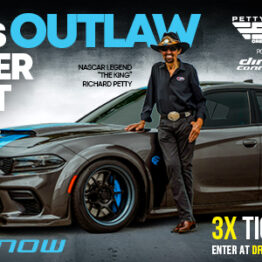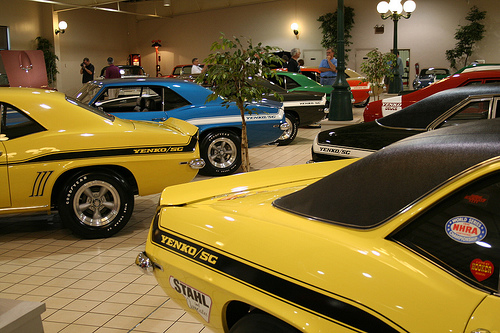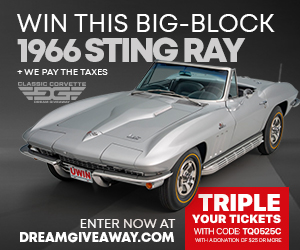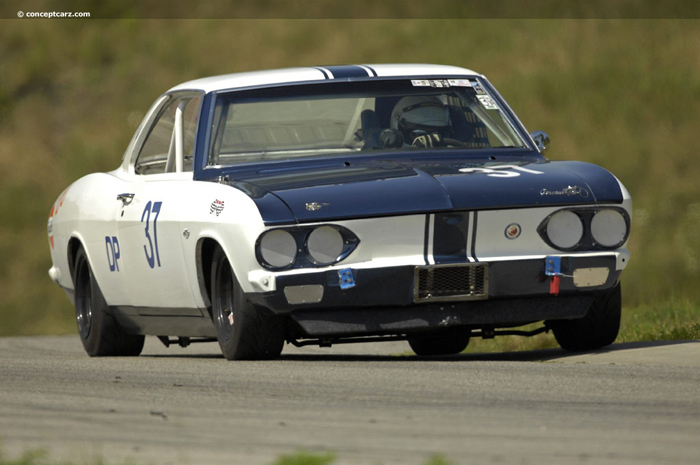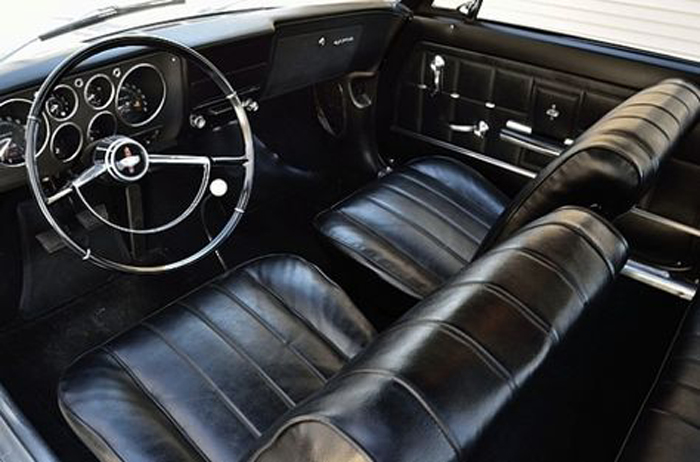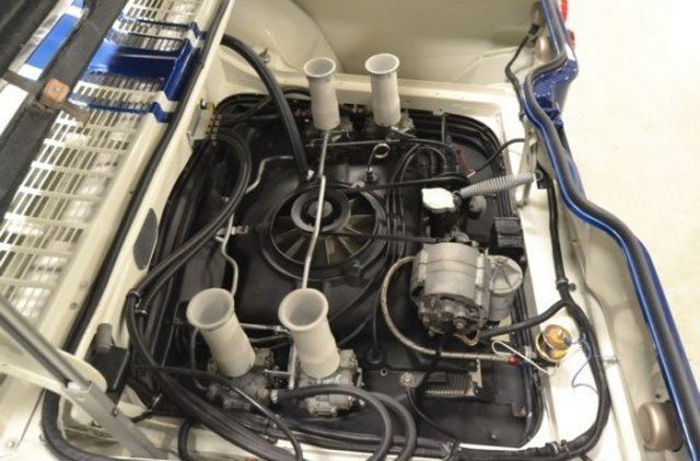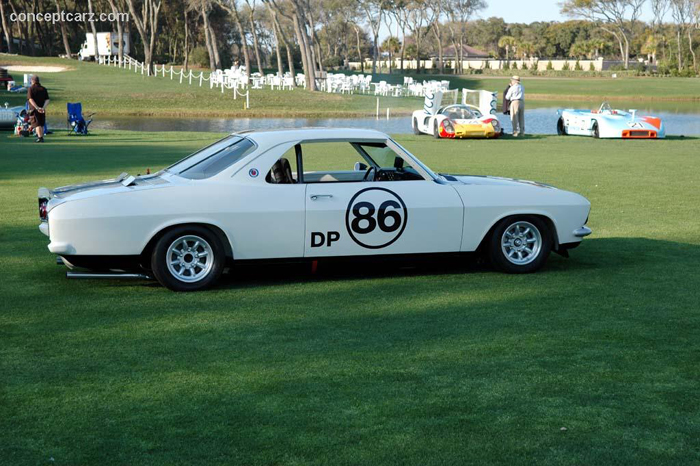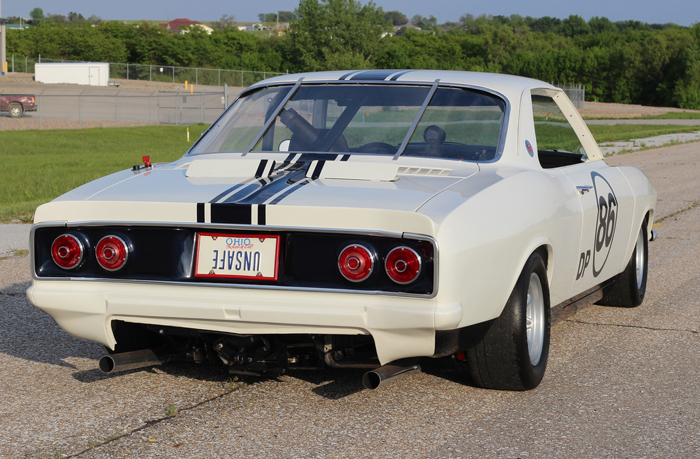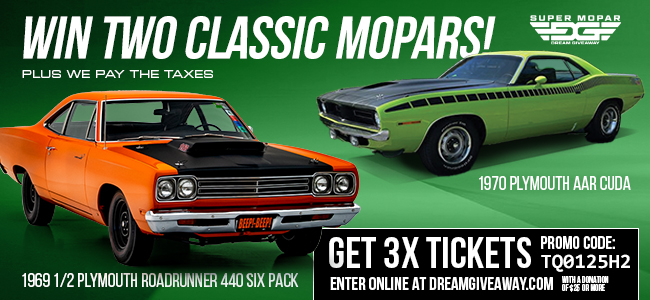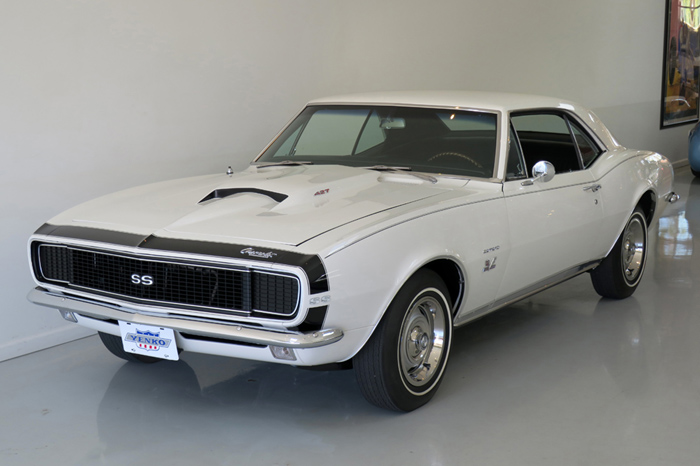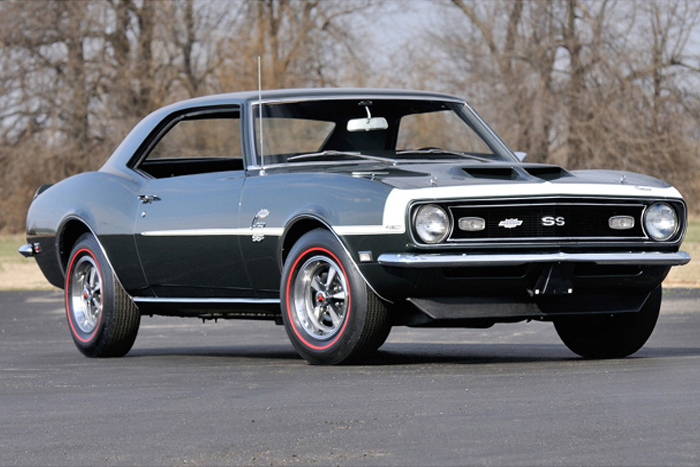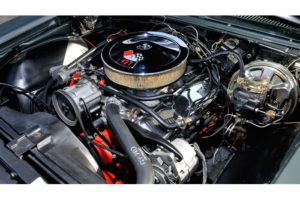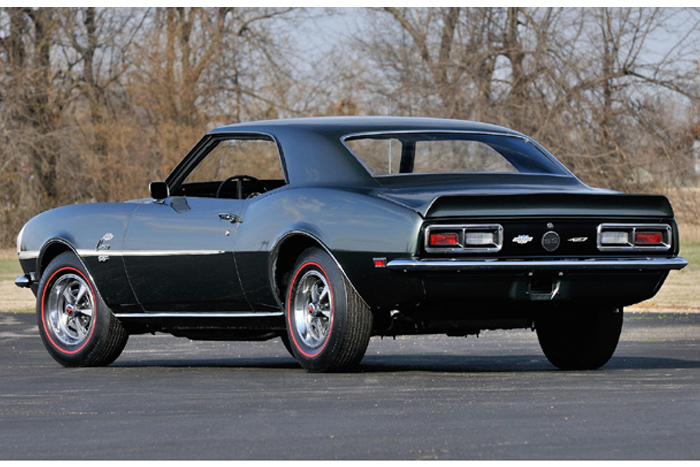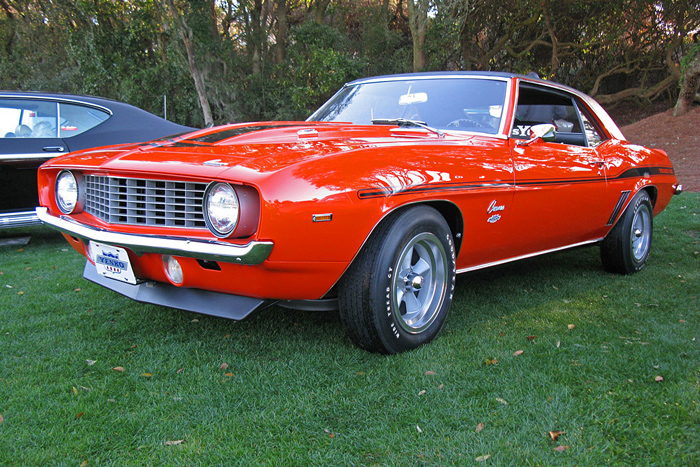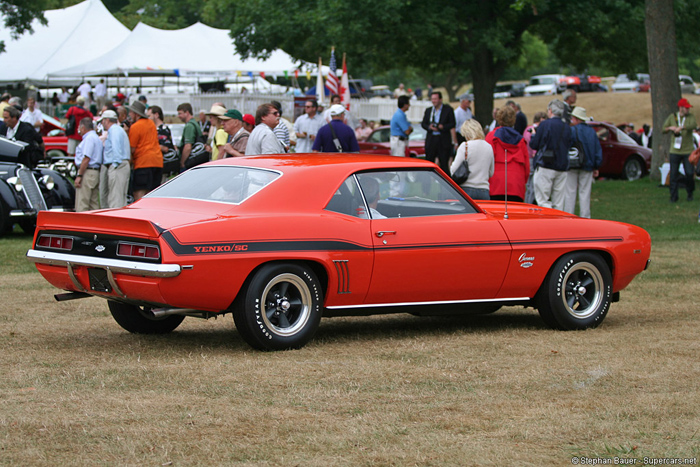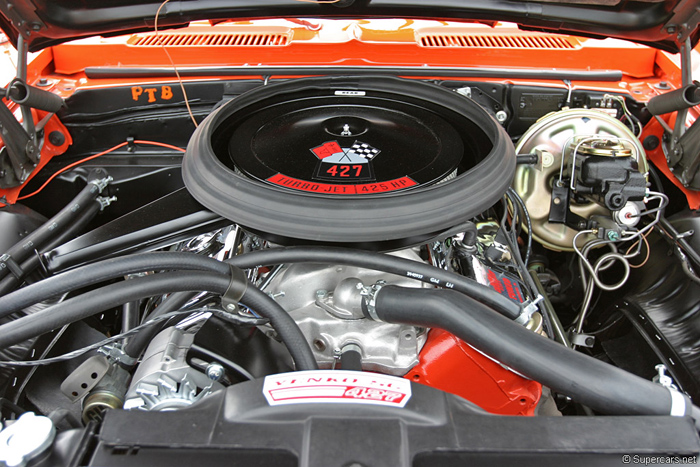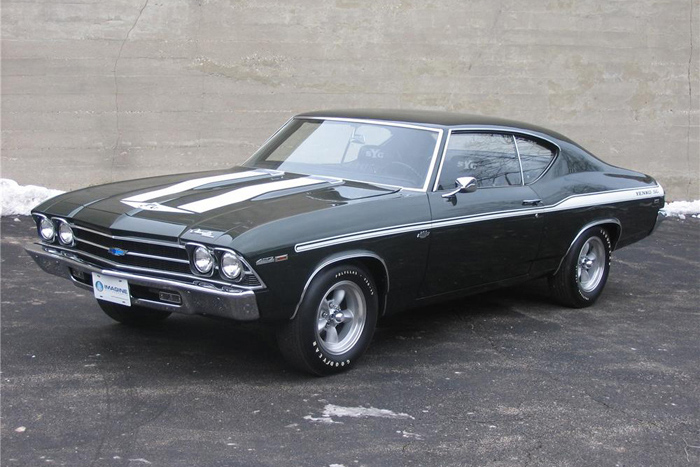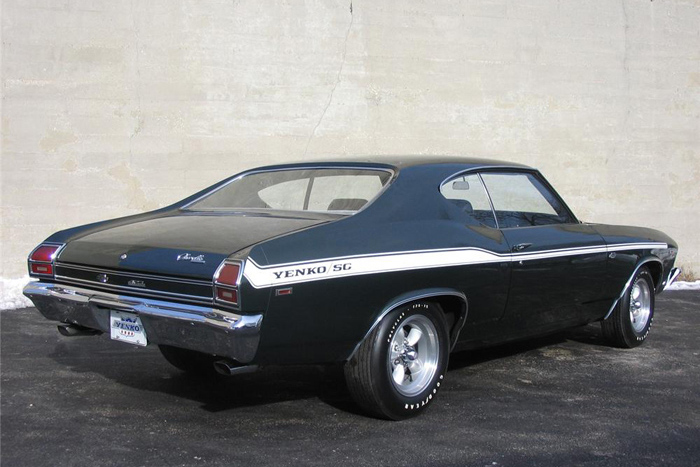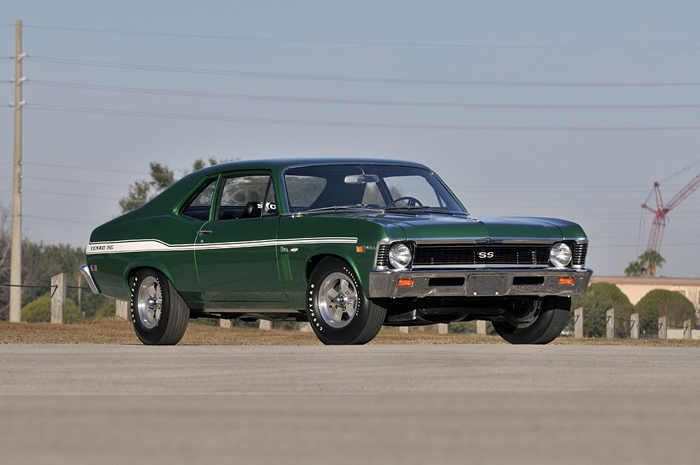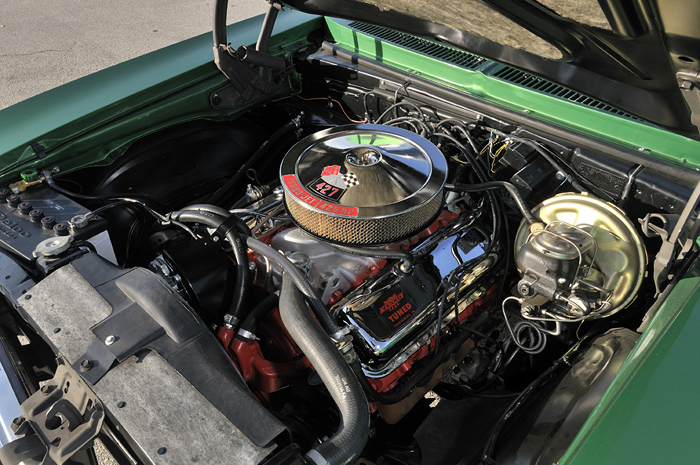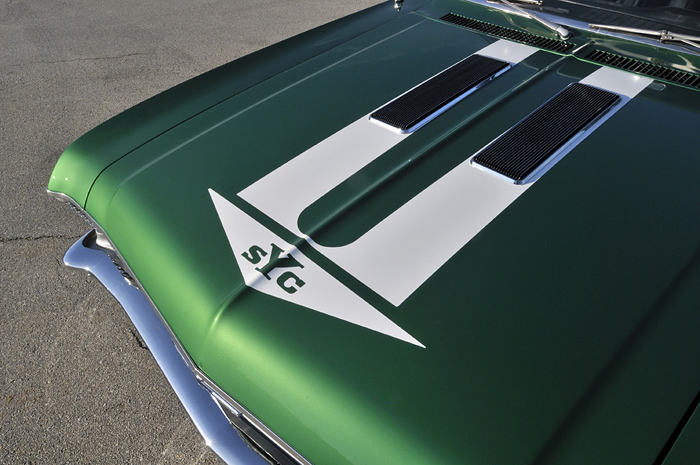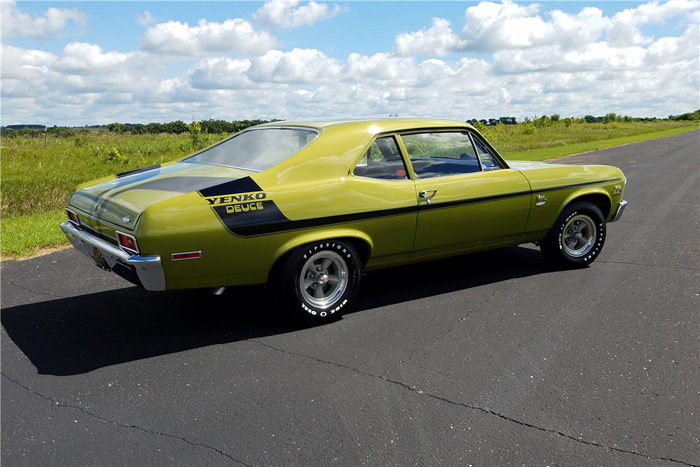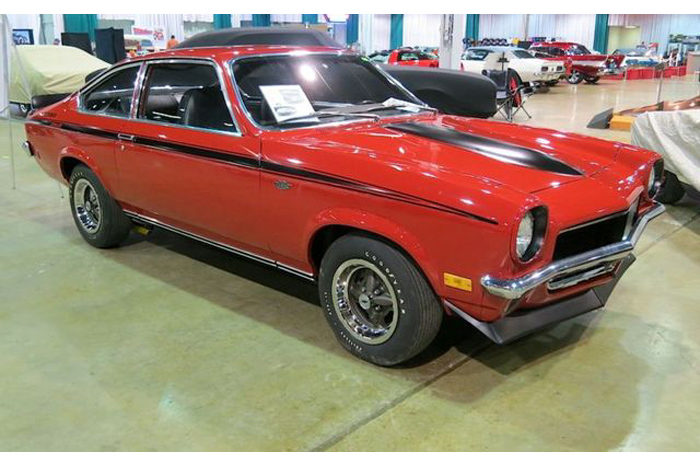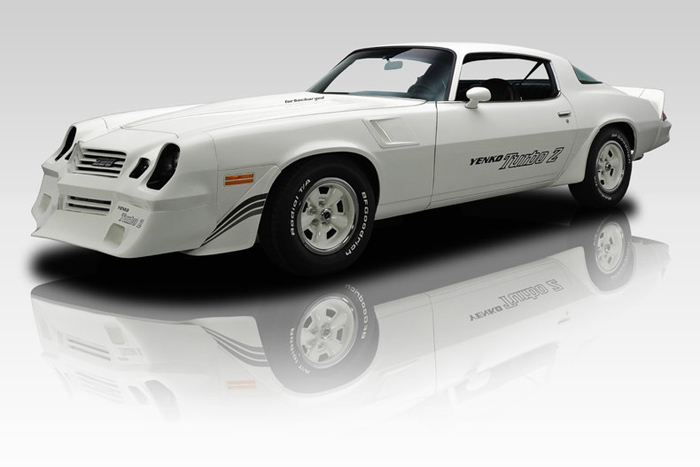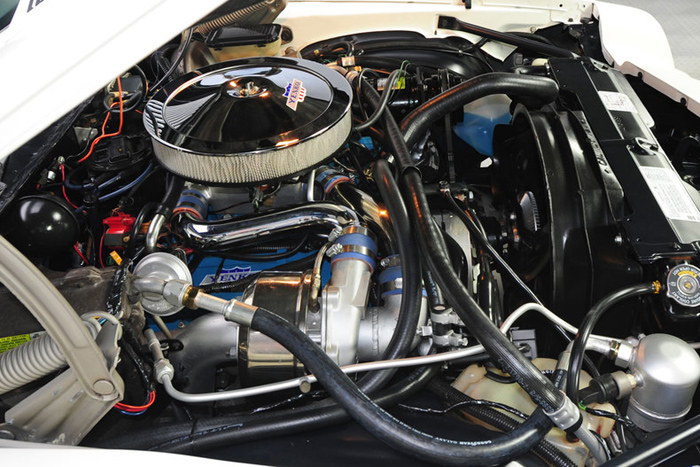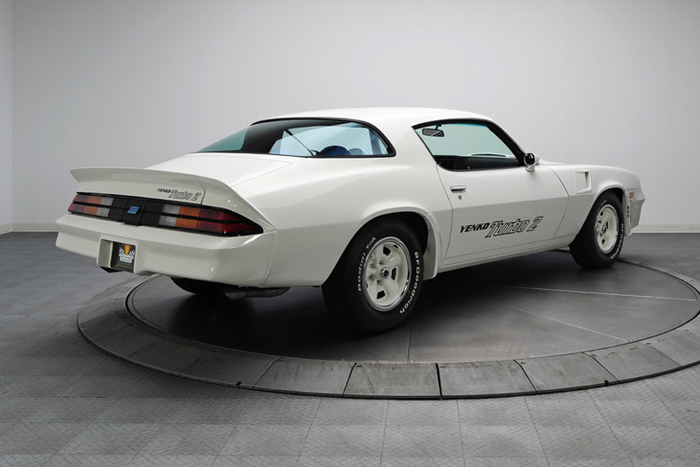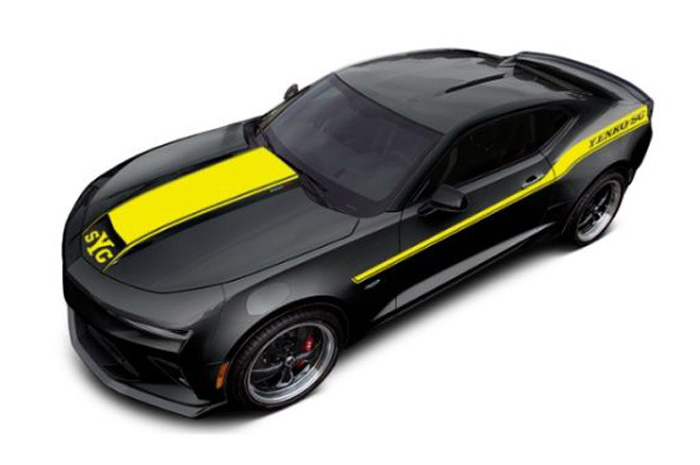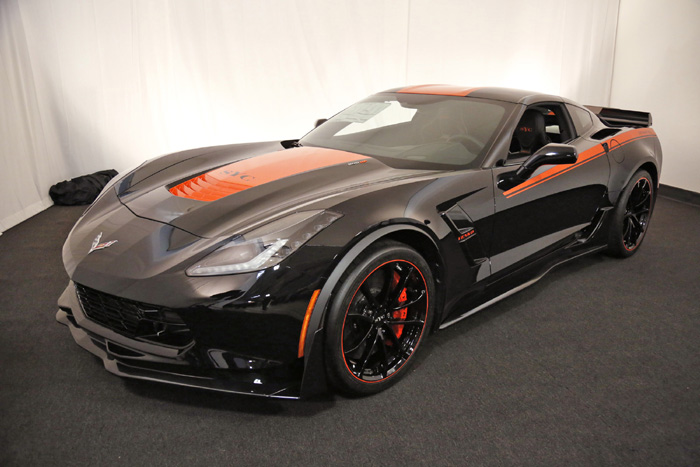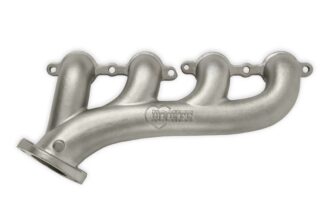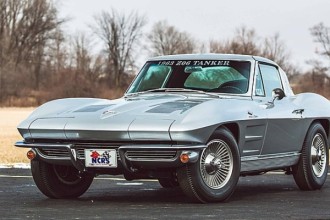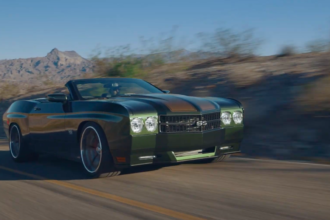We Take a Closer Look at Yenko’s Super Car History
Don Yenko had the knack for building fast cars. So much so, that Yenko Chevrolet had built up the reputation for being the go-to place for go-fast goodies. Opening up in 1949, Yenko Chevrolet, based in Canonsburg, PA, entered the performance world in 1957 by offering performance parts, as well as modifying your vehicle for you at the dealership. When you have the ability to make customers’ cars a lot more fun to drive, word gets out, as did the Yenko name. It wasn’t too long that Yenko Chevrolet began reaching for bigger and better things.
I mean, if you have something special, you might be able to package it, right? Not to mention, in the 60’s, not only were the automotive manufacturers sponsoring racing teams, but it was many of the dealerships that were campaigning them. By 1966, Don Yenko saw something is Chevrolet’s Corvair Corsa and its viability to campaign it in SCCA racing. However, in order to race your own car, it had to be available to the public. There were other SCCA-campaigned cars that have walked similar paths; like Carroll Shelby, who had campaigned the GT350 in 1965—Yenko would be no different, which led to a line of performance cars that the world wouldn’t soon forget. Let’s take a look at the vehicles that bore Don Yenko’s namesake:
1966: Yenko’s Introduction Into Tuning
Yenko Stinger
Never heard of it? Well, probably because it’s one of the first custom vehicles produced by Yenko Chevrolet, and it was produced on a vehicle that most muscle car enthusiasts would no-doubt ignore—the Chevrolet Corvair Corsa. Obviously, when you think of the Corvair, the word “performance” doesn’t come to mind, however, this little sedan had tons of potential. It was low, with a wide stance, with a rear-mounted flat six-cylinder boxer engine. This setup made the Corsa a surprising curve-hugger on the road courses; thus, Yenko submitted the car to the SCCA for approval to race.
In order to gain approval, Yenko Chevrolet needed to offer a street version to the public. This is where we’re introduced to General Motors’ Central Office Production Order (COPO) program. For those who aren’t familiar, the COPO program allowed for special vehicles to be built that weren’t normally being produced. For example, if a dealership had a particularly important customer that wanted to order a custom color, then they would fill out a form and send it to GM’s COPO office, and then the car would be built per the custom specifications.
Likewise, Yenko ordered 100 Ermine White Corvair Corsas minus the rear seats, upgraded suspension and upgraded brakes, just to name a few options. This eased their conversion into “sports cars”, that included a custom fiberglass sail panel and fiberglass deck lid with integrated spoiler. A set of tri-stripes were added, and the exterior was finished off with three Stinger decals, one on the front panel, and one on each sail panel.
Inside, the missing rear seat was replaced with a carpeted panel and some cars receiving an embossed Stinger decal on the glove box. Extra gauges were installed at the customer’s request. The power plant was offered in five horsepower stages; 160, 190, 220, 240 and 250 horsepower.
Engine modifications included headers, deep aluminum oil pan, and chrome air cleaners for the carburetors. Overall, the Stinger was a success. They competed well in SCCA competition, and they helped to make a name for Yenko as a car builder.
1967 — And Then There Were Two
Yenko Stinger
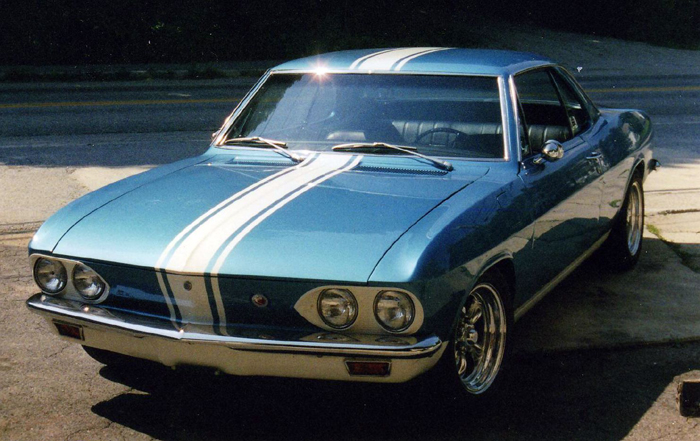
With 1966 being the biggest year for the Stinger, Yenko wanted to keep the action alive for ’67. That year, the Corvair Corsa model was discontinued, forcing Yenko to use the less performance-oriented Corvair Monza. The Monza lacked the performance suspension, the gauges and most notably, the 140hp engine that served as the basis for the five stages.
Fortunately, thanks to the COPO program, Yenko was able to pull some strings and get the engine he needed built and installed into the Monza, as well as a tachometer—all installed at the factory. Also, the color choices were expanded, since “any color you want, so long as it’s white” can prove to be somewhat of a deal breaker; plus, SCCA’s relaxed rules allowed for more color choices. A total of 25 Stingers were built that year.
However, the bigger news was the introduction of the Chevy Camaro. As an answer to Ford’s Mustang, the new Camaro offered engine choices all the way up to a 396-inch big block; six full cubes larger than Ford’s FE motor under the Mustang hood. However, Shelby introduced the GT500 that same year featured a 428 police interceptor for motivation.
Yenko Super Camaro
Back then, certain GM cars in particular categories were not allowed engines displacing larger than 400 cubic inches—the Camaro being one of them. It was a way they would maintain their “hierarchy”, so to speak. However, Yenko had plans to build a “Super Camaro”, and while the L-78 396 was good, Yenko’s Camaro needed more—like the 425hp, L-72 427 (but it made close to 450hp).
So, for Yenko’s first Super Camaro, each car started out as an SS396 with either an M21 or M22 manual transmission, 12-bolt 4.10 rear,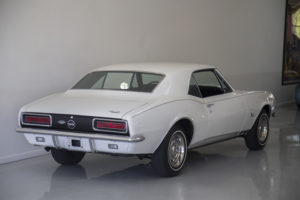 performance suspension, and heavy duty front disc brakes. They then ordered the L-72 427 short block, stripped the top end and accessories from the factory installed 396, and bolted them to the L-72 to install during the conversion.
performance suspension, and heavy duty front disc brakes. They then ordered the L-72 427 short block, stripped the top end and accessories from the factory installed 396, and bolted them to the L-72 to install during the conversion.
For the exterior, the new Super Camaro looked stock with Yenko badges on the front fenders, front grille, and rear panel. The stock hood was replaced by a fiberglass unit with the “stinger” cowl similar to the 427 Corvette hood.
Yenko’s Super Camaro was a huge step in the right direction for the pony car wars, as they improved the breed, and gave customers what they wanted.
1968 — Lone Wolf
Yenko Super Camaro
There were no Yenko Stingers built in 1968, I mean, who could blame him? With the success of the Super Camaro, how could anyone go back? Plus, the Camaro was quickly gaining in popularity. So, for the 1968 Super Camaro, it was more of the same recipe, with a few slight improvements. While GM’s COPO program was a godsend in many cases, their rule about the engines was the devil. Before 1968, there was no way to get a larger engine than the 396; not even with COPO.
However, to keep up with the demand for his Camaros, Yenko really could benefit from having the L-72 installed at the factory, so he approached the top brass at Chevrolet to see if something could be done. There are two stories going around about what happened next. One story is that Chevy was hesitant at first, but eventually agreed to supply Yenko with factory equipped 427 Camaros, provided he didn’t tell a soul what was being done for him. The other story is that Chevy was hesitant and didn’t give in until the ’69 model year, due to the success of Yenko’s program. Either way, Yenko continued production for the 1968 model year.
Engine swap or not, the team at Yenko Chevrolet was still able to utilize the COPO program to equip the Camaros in other ways before they reached the shop for conversion. Items added at the factory were a 140mph speedometer, a special Magic Mirror trim tag, and a 1 1/8-inch front swaybar.
With the 427 and Muncie trans in place, the exterior was spruced up slightly compared to the previous year, in that in addition to the Yenko badging, a new hood was added, and the car was treated to either an SS stripe around the nose, or a stripe that started on the nose and was swept back to the doors.
The ’68 was further differentiated with the addition of 14 x 6 styled steel wheels from the Pontiac parts bin. Also, early cars came equipped with a rear spoiler made for Yenko, and it was very close to the factory spoiler that later replaced it. A tachometer and gauges were installed in the interior, and each vehicle got a special serial number tag in the driver’s side doorjamb. There were 64 units built.
By the end of the ’68 model year, the muscle car movement was in full swing, and despite the small production numbers, the Yenko Camaros had made a name for themselves, but 1969 was going to be a banner year.
1969: Unified Look — The Yenko/SC Lineup
In 1969, muscle cars and pony cars ruled the streets. The auto manufacturers were offering Camaros, Mustangs, Corvettes, Chargers, Roadrunners—you name it. At Yenko Chevrolet, things were starting to ramp up. For starters, working with Chevy, Yenko was finally able to get them to factory install the L-72 427 in his special-order Camaros.
This was in no small part due to the overwhelming success and popularity of the 427 Camaros. Not to mention, places like Nickey Chevrolet, and Motion Performance were also producing their own 427 F-bodies. Second, Yenko expanded the production line to include Chevelles and Novas built alongside the Super Camaros. Finally, with the advent of Chevelles and Novas, the names of the cars were changed to “Super Car”, or just Yenko/SC—he even had a logo on each of his creations
Camaro
Since Chevy was cooperating and installing 427’s at the factory, they created COPO 9561 for the Camaro. This included the L-72 427 engine installed at the factory, which was made available to any dealer. Other items included in 9561 was a HD 4.10 ratio 12-bolt rear-end, J52 power front disc brakes, HD 4-core radiator, cowl induction hood, special springs, and transistorized ignition.
Also included was COPO 9737, which included a 140 MPH speedometer, a 13/16-inch diameter sway bar (increased from the 11/16-inch diameter standard bar), and E70x15 Goodyear Wide Tread GT tires on 15-inch rally wheels.
Chevelle
For the Chevelles, there was COPO 9562. It was pretty similar to 9561, however, it was not based on the SS but the base Chevelle with Malibu interior. The rest of the options featured heavy duty suspension, heavy duty radiator, power front disc brakes, 12-bolt rear limited slip differential, F70x15 ‘white letter’ tires, bucket seats, and AM push button radio.
Like the Camaro, came with the L-72 427 under the hood. A total of 99 sYc Chevelles would be produced for ’69.
Nova
The Nova was different in that Chevy offered no special COPO for it, so Yenko had to go back to their roots by ordering an SS 396 along with an L-72 short block. The L-78 was yanked and stripped to make the 427 a complete engine and installed. While the engine was rated at 425hp, rumors circulated that in the Nova, it actually made closer to 500hp. The package also included the 12-bolt 4.10 diff, heavy duty power front disc brakes, and upgraded suspension.
Yenko decided to go with a theme for the exterior of the 1969 Super Cars. All models received (unless deleted on the option sheet) a pair of stripes that ended near the front in an arrow with the letters “sYc” (Yenko Super Car). The sides featured a body stripe going from front to rear proudly displaying “Yenko/SC” on the rear quarter panel.
The cars also featured the Yenko badge on the rear panel with the “427” emblem, and “427” emblems on each side of the cowl scoop. Other options included a black vinyl top and Torq-Thrust wheels. Inside, was a standard black interior, with custom headrests proudly displaying the “sYc” logo. Camaros also received front and rear spoilers. All models had the option of the Muncie 4-speed manual, or TH400 automatic transmission.
Each of the Yenko Super Cars for 1969 were beautiful, yet deadly. Production numbers for the Camaro, Chevelle, and Nova were 198, 99, and 38 respectively.
1970: And Then There Was Only One
For 1970, the winds of change began to blow for the muscle car world. The United States was on the verge of an oil crisis, emissions regulations began to tighten up on auto manufacturers, and insurance companies began to crack down on big-inch, high horsepower cars; causing consumers to shy away from big-blocks due to high insurance costs. In response, manufacturers began producing lower horsepower, smaller displacement engines and even discontinuing some of their most popular big blocks; with the L-72 427 being one of the casualties. It seemed that everything was getting a 327 or a 350 instead. To further discombobulate things, the Camaro was completely redesigned.
However, in the midst of the chaos of restructuring arose the LT-1. Known as “the ultimate 350”, it wasn’t your average, run of the mill 350; it was an 11:1, solid lifter, Holley 780 carb-on-an-aluminum-intake beast that was rated at a conservative 360 and 370 horsepower for Camaros and Corvettes, respectively.
Yenko Deuce
Instead of taking the time to sort out the new Camaro platform, Yenko decided to take a new approach using the Nova. With the 427 no longer available, and the SS396 actually displacing 402 cubes, trying to work with a big-block seemed to work against the odds, so it was decided to employ the new LT-1. Working within the COPO program, Chevy delivered a grand total of 175 360hp, LT-1 equipped Novas to Yenko Chevrolet—with a 3-year warranty to boot. Since the new Nova wasn’t the big-inch brute from 1969, the small-block Nova brought a new model; the Yenko Deuce.
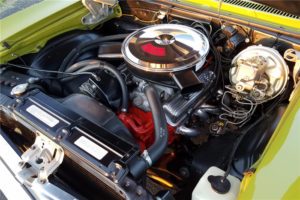 The Deuce came equipped with a bench seat, rubber floormats, dual exhaust, power front disc brakes, front and rear anti-roll bars, heavy-duty springs, heavy duty cooling system, M-21 four-speed transmission with special Hurst shifter or TH400 automatic transmission, and a 12-bolt Posi-traction rear axle with 4.10 gears.
The Deuce came equipped with a bench seat, rubber floormats, dual exhaust, power front disc brakes, front and rear anti-roll bars, heavy-duty springs, heavy duty cooling system, M-21 four-speed transmission with special Hurst shifter or TH400 automatic transmission, and a 12-bolt Posi-traction rear axle with 4.10 gears.
Graphics on the Deuce were changed to twin stripes on each side of the hood, with “DEUCE” lettering on the leading edge. Horizontal stripes were also placed on the sides of the Nova that swept up the quarters with “Yenko Deuce” displayed in large lettering on the quarters before it carried over to the trunk and down the rear.
Also included was a hood tachometer, a trio of Yenko badges on each fender and on the trunk lid, and the option of Torq-Thrust, or Magnum 500 wheels. A Yenko Deuce logo was also displayed on the inside door panels.
While it was no 450hp beast, the Deuce was still very formidable on the street. It was a smart response to a set of very harsh circumstances for the industry, and really became part of what set the new pace of American enthusiast cars for the future. 175 units were built.
1971: The Return of The Stinger
Vega Stinger II
With the crackdown on the manufacturers to produce more economical, lower horsepower, insurance-friendly vehicles, the Vega was introduced by Chevrolet. Powered by a 110hp 2.3 liter 4-cylinder, it was an extremely far cry from a solid-lifter V8. However, in light of the strict regulations being imposed on the manufacturers, it was the best they could do. It would take the big three 15 years to recover.
Yenko decided to build a turbocharged sleeper with the Vega. Once again, using the COPO program, Yenko ordered 200 (production numbers unconfirmed) Vega GTs with the 2.3 liter engine outfitted with turbo-friendly forged aluminum pistons for a Yenko-developed turbocharger system that never made it on the car due to the EPA never approving the combination. The turbo system was sold through the aftermarket for customers to install themselves. With the turbo, the engine output was boosted from 110 to 155hp.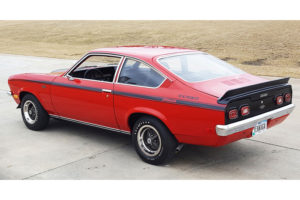
The Yenko Stinger II received Stinger stripes down the side, special paint on the hood and rear panel, front and rear spoilers, an aluminum Yenko valve cover, slapper bars, and Yenko badging. It looked the part, however, in without the turbocharger, it was just another Vega. It was more of the same for 1972.
There were reportedly another 200 Vega GTs ordered, but this time, the count was 150 coupes, and 50 wagons. Also, once again, the turbocharger didn’t make it as a standard component, but was always available as an aftermarket piece. It’s rumored that only one Stinger Vega was built for 1973.
After the Stinger II, Yenko Chevrolet backed away from building cars and sold aftermarket performance parts; then in 1981 they decided to modify a new car.
1981: The Overlooked Tuner Car
Yenko Turbo-Z
The automotive industry was finally able to level out the tailspin and survived the 1970’s in spite of OPEC and the EPA. We still had the Corvette, Mustang and Camaro, but in very anemic forms. Chevrolet was working on a turbocharged version of the Camaro, but the project never got off the ground. So, they approached Yenko about taking on the project, which they did, and produced a well-balanced machine that is something Chevrolet really should have produced—The Yenko Turbo Z
Showing off his talent for being versatile, Yenko went in yet another direction with the Turbo Z. Instead of producing a brutish street beast, the Camaro was refined, smart, and slightly luxurious. Offered in three stages, the Stage I packed a 350 under the hood topped off by a draw-through single turbocharger that was backed by a TH350 transmission. The exterior featured special Yenko Turbo Z graphics, and a locomotive-like plow on the front that was actually similar to the air dam on the Penske-built, 1979 IROC racing Camaros.
For Stage II, it was Stage I with the addition of Koni shocks on all four corners, thick sway bars front and rear, modular wheels with Goodyear Wingfoot tires, leather racing seats, leather steering wheel, Turbo Z floor mats, gauge package, and a Pioneer AM/FM/Cassette stereo. A Stage III was offered, but there aren’t any details on the equipment. Production totals for all three stages were 19 cars, including 3 Stage III cars.
Performance-wise, Hot Rod labeled it the “Ultimate Camaro”, even besting the 1981 Corvette in the quarter-mile. The suspension upgrades made it an excellent touring car. This was the last vehicle produced by Yenko himself while he was alive, and the Yenko Turbo Z did not disappoint.
Yenko: The Next Generation
Don Yenko, an innovator, entrepreneur and speed merchant; passed away in 1987 in a plane crash. While he is sorely missed, his name lives on in the vehicles he had his direct hand in. Today, the Yenko name is owned and licensed by General Marketing Capitol Incorporated (GMCI), and have played a large part in the latest generation Yenko/SC Camaro and Yenko/SC Corvette.
These new Yenkos are built by Specialty Vehicle Engineering (SVE) and feature the latest generation LT4 engine that generates between 800-1000hp, based on what you order. They’ve even introduced an 800hp Silverado version. There are also a line of officially licensed continuation Yenko/SC Camaros available. Yenko’s legacy continues to live on as strong as ever. If you’ve ever had the pleasure of owning or being in the presence of one of these legendary vehicles, you’re part of an elite club. Take the time to appreciate these timeless classics.
Living in Richmond, Texas, PJ Rentie has been in the automotive industry for more than 30 years. This former Assistant Editor at Vette Magazine also spent time with companies like NOS, Edelbrock, Hillbank Motorsports, Classic Industries, and was an automotive instructor for Cypress College for ten years. In his spare time, PJ hopes to one day bring his Fox Body Mustang out of the back yard and back onto the street!

